How to test a high voltage diode in a microwave oven
Microwave ovens have long appeared in homes for convenient heating of food. They are quite easy to manage and affordable.
Despite its reliability, the product is not protected from inevitable technical failures. At some point it simply stops working. The main reason is the breakdown of the high-voltage diode.
A high-voltage diode is several parts connected in series to each other in a common housing. The package includes a special rectifier diode. This product is equipped with a nonlinear current-voltage technical characteristic.
Such a microwave part cannot be measured with a regular tester, you need to use a multimeter.
The content of the article
Diode check
Important. For the procedure, the oven must be disconnected from the power supply. The cord is removed from the outlet.
Then perform a visual inspection of the microwave. If there are no melted areas or darkened areas, it is necessary to use a special measuring device.
How to find a high voltage diode
The mechanism works according to one principle. But there are many varieties of this element. The design of the microwave oven has a circuit board with markings. The required element is usually indicated by the symbol DB 1.
As soon as you figure out which model your microwave belongs to, you can replace the part with a similar element.The markings will be different, but the type of operation of the product will be the same. It’s just that each manufacturer has its own labeling system.
The technical characteristics of the part are as follows:
- current output up to 700 mA;
- the highest voltage is about 5 kV.
How to test a high voltage diode with a multimeter
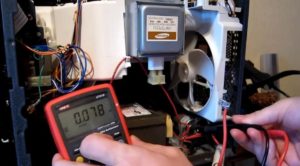
To assess the condition of an important part, you need to use a special device - a multimeter.
After disconnecting the heating equipment from the power supply and removing the oven element, you need to turn the part over. This will allow you to measure the voltage on both sides.
Resistance is measured in both forward and reverse directions.
- The multimeter must be set to R x 1000 mode.
- Connect it to the diode, to the terminal with the + sign (this is direct resistance). The tester should show the final resistance on the screen.
- After this, connect to the terminal with a minus sign. This is a measurement of the reverse direction of resistance. The tester should display infinity.
Important. The multimeter must be connected to a network of at least 9 volts.
Testing a high-voltage capacitor with a multimeter is only possible for breakdown. If the device shows a short circuit, the part must be replaced.
Indicators of the condition of a high-voltage diode
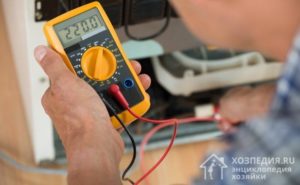
An ordinary tester, as we have figured out, will not work here. Since the highest resistance measurement limit is 2 MΩ, such a device will always indicate an “open” circuit in this case.
If you decide to take the measurement yourself, you need to know how it works correctly.
- If the element is in good condition, the multimeter indicator arrow will show 0.25 volts. EIf you check the resistance in the opposite direction, it will not show anything.
- The failure of the part is indicated by the absence of indicators when measuring in all directions. If a fault occurs, the mechanism lamp will glow evenly or not light up at all.
Considering the above data, we can conclude that the high-voltage diode in the microwave is faulty and must be replaced with a new element. After replacing the element, the microwave oven will function like new.
When checking the resistance on both sides, it is important to know: the terminals differ in purpose and connection.
The mechanism element with the + sign is marked on itself and ends with a bolt at the end - this is the anode.
The terminal with the sign - has a connection to the capacitor, and it ends with a bracket - this is the cathode.
If the microwave strip is not a faulty high-voltage diode, it will be difficult to repair and check it yourself.
Just something to write about. Diodes burn the least. First you need to look at the high voltage fuse. Then the container, and for the presence of swelling and leaked oil. Next, the magnetron is open. If the diode is short, then the high-voltage fuse will burn out. If there is a break, the oven will make a loud noise when turned on. And we should not forget that excess voltage may remain in the high voltage capacitor. It won’t kill you, but it will shake you violently.
“...The element of the mechanism with the + sign is marked on itself and ends with a bolt at the end - this is the anode...” The terminal with a bolt at the end is just the CATHODE, it is connected to the housing.. In all microwave circuits, the diode is connected to the housing precisely by the cathode.

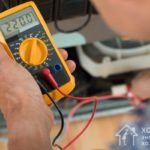
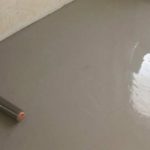

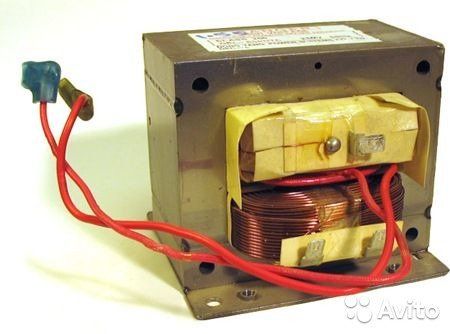

It’s good that I know how testers and multimeters work, which, in fact, is the same thing, and what high-voltage poles are, some of ours, such as KTs201, or compact imported ones, made up of several, up to a dozen, high-voltage diodes connected in series. And how to use the former to check the latter.
Because, having used the above advice from the author of the article, I would most likely be at a dead end. Because it is written, to put it mildly, nonsense.
“The multimeter must be connected to a network of at least 9 volts.” - Which “network”, where from?
“the index arrow of the multimeter will show 0.25 volts” - What is the “arrow” in the digital device?
“In the event of a breakdown, the lamp of the mechanism will glow evenly or will not light up at all” - Which lamp, which mechanism?